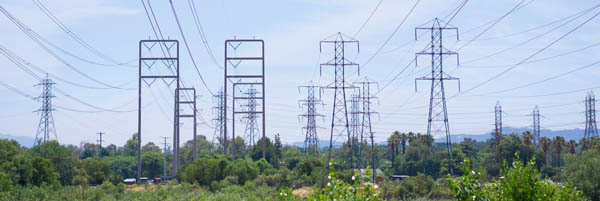 After looking at my electric bill recently, I wondered where all that power was going. One of the prime suspects was Koherence’s server rack, which runs 24 hours a day. A few years ago all servers inthe rack got an overhaul with a goal to minimizing power consumption.
After looking at my electric bill recently, I wondered where all that power was going. One of the prime suspects was Koherence’s server rack, which runs 24 hours a day. A few years ago all servers inthe rack got an overhaul with a goal to minimizing power consumption.
Power supplies were replaced with 80 Plus rated units sized to the loads of the various machines. CPUs and motherboards were swapped out so that the more efficient Core2Duo processors could be used. Hard drives in the NASes were set to spin down after three hours of inactivity. Multiple servers were consolidated onto single machines using VMWare Server.
The net result, recently measured using a WattsUp Pro meter, was a draw of 271 watts at the outlet for one of the server racks.
271 watts doesn’t sound like a lot. Three or four incandescent lightbulbs would match that draw. But multiply that by 24 hours and you get 6.5 kilowatts/day. At 13 cents per kilowatt, that’s about 84.5 cents per day, or $308.48 per year, for a server rack which is running idle. Not to mention that all of that power turns into heat, which leads to increased cooling costs during the warmer months of the year.
So where does all that power go?
- Powering down the NAS brought total power down to 211 watts. Recall that the power measurements were taken when the NAS was idle, and though I didn’t check the drives should have been spun down. The NAS has four drives and a Core2Duo E4500.
- Powering off one of the VMWare Server machines which typically hosts a couple virtual machines brought power draw down to 166 watts. This wasn’t a terribly powerful machine even when it was first assembled, as its primary duties were to host FTP servers, web servers, and the like.
- Draw was reduced by 6 watts to 160 watts when two exhaust fans were powered down. These provide general cooling to the server closet.
- Powering down all of the virtual machines on Koherence’s core VMWare Server machine (but not powering down the server itself) dropped power draw from 160 watts to 134 watts. This was somewhat surprising, as all of the virtual machines were idle. This particular machine hosted six virtual machines, most running CentOS 5.x. It would be interesting to see if an upgrade of the VMs (and maybe the VMWare Server host itself) to EL6 with its tickless kernel would improve things a bit.
- Powering down the core VMWare Server machine dropped power draw to 68 watts. From running the six virtual machines to being powered off, this machine contributed 92 watts to the rack’s power draw. As this machine hosted most of Koherence’s intranet, this was one of the beefier machines with a Core2Quad 8200 and 8 GB of RAM (well, it was beefy when it was assembled…).
So we now have 68 watts left for a rack where all machines are powered off, and is basically just running networking gear. So let’s disect this…
- A little more than a year ago I swapped out an aging Linksys RV082 for a Netgear GS724TR smart switch. Overall I can’t say I’ve been terribly happy with the GS724TR – it’s inter-vlan routing speed is pathetic, it has two fans that are louder than all of the servers in the closet combined, and the fans have an unfortunate tendency to fail. Now we can add to that unsavory list of traits a power draw of 26 watts. Something tells me this guy is going to end up on Craig’s List in the near future.
- A Netgear DGND3300v2 ADSL modem router consumes 9 watts.
- A Netgear FVS318G router takes another 7 watts.
- Two RF amplifiers take about 3.5 watts a piece for another 7 watts.
We’ve now got a server rack with all equipment powered off and drawing 19 watts.
- While the servers are powered off, they are still plugged in and drawing vampire power. Yanking the cords from the outlets brings us from 19 to about 10 watts.
At this point, we’ve just got two UPSs supplying power to….nothing.
- Power off the two UPSs and the WattsUpP Pro finally reads zero.
